After a gastropexy, dogs are less likely to develop gastric dilation volvulus (GDV) since their stomachs are surgically tacked in place. Integrative veterinarian Dr. Julie Buzby explains which dogs might need a gastropexy, what the procedure entails, and how to help your dog recover. Plus, she discusses the pros and cons of prophylactic gastropexy for at-risk breeds.
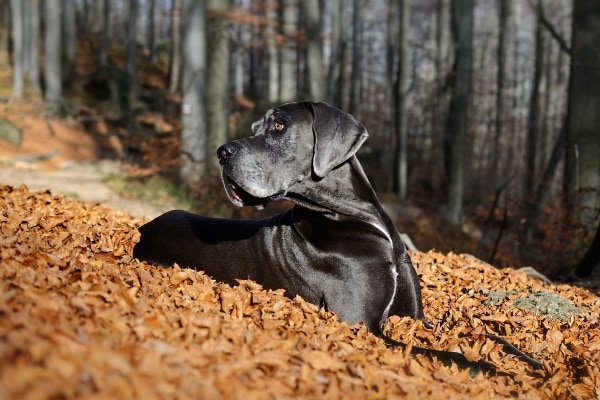
Recently, a client brought her newly rescued one-year-old Great Dane in for a new patient appointment. In preparing for her newest furry family member’s arrival, my client had read up on Great Danes and knew about a life-threatening condition called gastric dilation and volvulus (GDV). She was particularly concerned because her Great Dane was also a speed eater, which is another GDV risk factor.
During the appointment, we talked about some additional risk factors and symptoms of GDV. I told my client that in my opinion, her new dog may be a perfect candidate for a prophylactic (i.e. preventive) gastropexy surgery. Like my client, you may have questions about gastropexy surgery for your dog, too.
What is a gastropexy in dogs?
If you break the word “gastropexy” down, “gastro” refers to the stomach and “pexy” means to surgically fix in place.
Therefore, a gastropexy is a surgical procedure that involves attaching a dog’s stomach to his or her abdominal wall. Gastropexy is sometimes called “stomach tacking in dogs,” which is a pretty apt description of the procedure.
Typically, a vet will perform a gastropexy surgery for one of two reasons:
- To prevent an at-risk dog from developing gastric dilation and volvulus (GDV).
- To decrease the risk of a GDV reoccurrence in a dog who is having surgery to correct a GDV.
Next, to understand gastropexy, we need an overview of GDV in dogs.
A brief overview of GDV in dogs
GDV is a life-threatening condition for dogs. As the name indicates, the stomach fills with gas (i.e. dilation) and twists (i.e. volvulus). It may also be called bloat in dogs, twisted stomach, flipped stomach, or other similar terms.
Typically, bloat occurs most frequently in large breed, deep chested dogs. (That said, the very first case of GDV I ever saw was in a Dachshund, which is still deep chested but not large). While Great Danes account for about 40% of dogs who develop GDV, there are other at-risk dog breeds including:
- Irish Setters
- Doberman Pinschers
- Saint Bernards
- Weimaraners
- Standard Poodles
- Labrador Retrievers
- Gordon Setters
- Basset Hounds
- Old English Sheepdogs
- Boxers
- German Shepherds
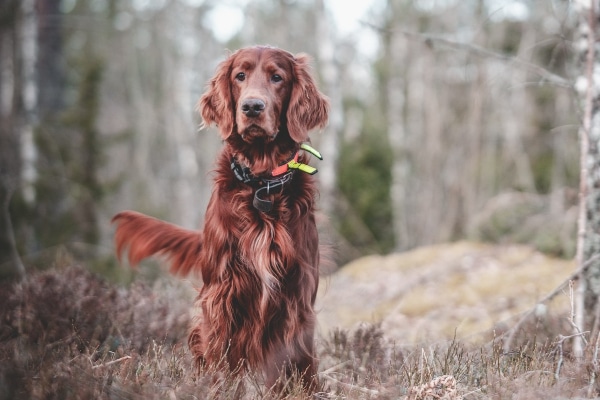
Additionally, there are other factors that could put a dog at risk for developing GDV such as:
- Eating very large meals or just one meal a day
- Eating fast
- Restricting water around the time of feeding
These eating habits are problematic because when the stomach fills quickly or with large amounts of food, this can impair normal movement of food through the digestive tract. As a result, the stomach may rotate, leading to a GDV.
GDV often progresses rapidly as the stomach continues to dilate. Eventually, the stomach can become so large it puts pressure on blood vessels in the abdomen, preventing blood from flowing back to the heart. It may also compress the diaphragm, making it hard for the dog to breathe. Additionally, a GDV can cause heart arrhythmias, shock, low blood pressure, and other life-threatening abnormalities.
A dog with a GDV will need emergency surgery to decompress the stomach and rotate it back into its normal position. Then the vet will typically tack the stomach in place to prevent recurrence.
Research on gastropexy surgery indicates that without a gastropexy, the chances of developing another GDV are as high as 80%. But a gastropexy drops the chances of reoccurrence to less than 5%.
As you can imagine, GDV is often fatal if untreated (or not caught soon enough). And sadly, even with prompt treatment, 10-30% of dogs with GDV will not survive.
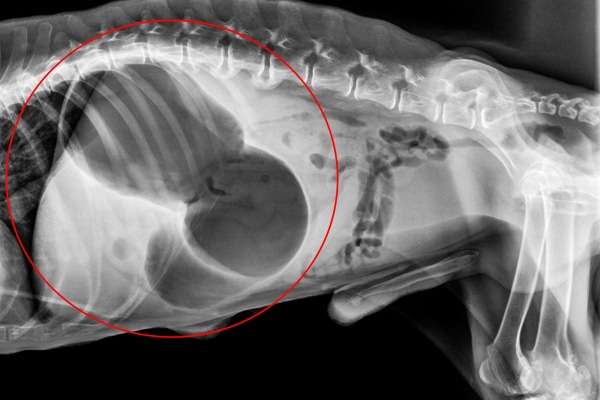
What are the pros and cons of a prophylactic gastropexy in dogs?
For these reasons, prevention, in the form of a prophylactic gastropexy, is often the best medicine for at-risk dogs. However, I know it can be scary to think about your dog having an elective surgery, so it is important to consider the pros and cons.
As you can probably guess, the biggest pro of a gastropexy surgery is that it has a high likelihood of preventing your dog from experiencing a painful and life-threatening bloat. Fixing the stomach to the body wall greatly reduces the risk of the stomach twisting in at-risk dogs. However, it is not a guarantee that your dog will never develop a GDV. Technically, your dog can still bloat after a gastropexy.
Additionally, recovery from a preventative gastropexy is much easier than recovering from bloat and an emergency surgery. Typically, the healing time is much shorter in a healthy dog and these dogs tend to be less painful post-op. They are able to come home sooner because they don’t have to be monitored so carefully. Plus, performing anesthesia and surgery on a healthy patient for an elective gastropexy carries less risk than anesthesia and surgery on a patient with a GDV.
Finally, the cost of a prophylactic gastropexy is significantly less than an emergency gastropexy. On average, the cost of a prophylactic surgery will be in the hundreds of dollars. However, an emergency gastropexy will likely cost thousands of dollars. This is because of the emergency vet visit, diagnostics, intensive monitoring, fluids, medications, etc. that a dog with GDV requires in addition to the surgery itself.
Pros and cons chart
To help you weigh the pros and cons, I have also summarized them in the following chart:
| Pros of prophylactic gastropexy | Cons of prophylactic gastropexy |
|---|---|
| Has a high chance of preventing your dog from experiencing life-threatening GDV | Does not rule out the possibility of GDV completely |
| Recovery is easier when it is an elective surgery | Any surgery and anesthesia carries risk |
| Preventive surgery is significantly more cost effective | It is another expense early in the life of your dog |
Ultimately though, the best thing you can do is speak with your veterinarian about whether a prophylactic gastropexy could be right for your dog. Your vet knows you, knows your dog, and would be the best person to give individualized recommendations.
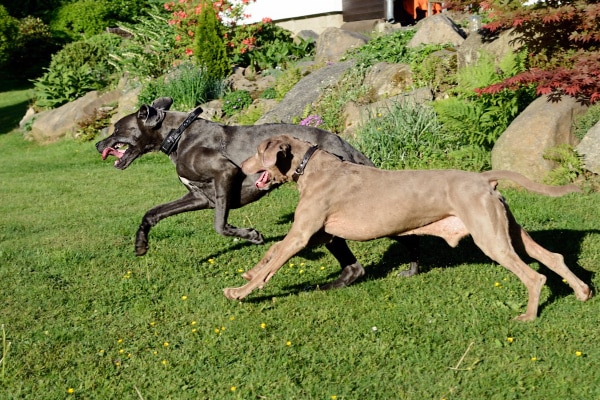
What should you ask your vet about your dog’s gastropexy?
While discussing the pros and cons of a prophylactic gastropexy, you may also want to ask your vet the following questions so you know what to expect before, during, and after the gastropexy:
1. At what age do you prefer to do the gastropexy?
Every vet may have different preferences regarding when to perform a gastropexy. However, most will probably recommend waiting until your is dog about one-year-old so he or she is close to adult size. Some vets will schedule the gastropexy at the same time as your dog’s spay or neuter and others prefer to do it separately.
2. Which gastropexy procedure do you use?
Your vet probably has a particular gastropexy procedure that he or she is comfortable with and/or feels would be best for your dog. Or if your vet doesn’t perform gastropexies, he or she can also refer your dog to a veterinary surgeon or different veterinarian in the area for the procedure.
There are five main types of gastropexies:
Incorporating
While this is one of the fastest techniques, incorporating gastropexies are usually not recommended. To do an incorporating gastropexy, your vet will incorporate the stomach in the incision used to enter and close the abdomen. The problem with this procedure is that if your dog ever needs an abdominal exploratory or other surgery, there is a risk that the vet will accidentally cut the stomach when making the new incision in the body wall.
Laparoscopic
A laparoscopic gastropexy is a minimally invasive surgery option because it uses a very small hole rather than a larger incision. The surgeon will insert a camera through the hole to act as his or her “eyes.” Then the vet will use the camera and another small tool to attach the stomach to the abdominal wall. This technique usually is less painful than other types of gastropexies and has faster healing time. However, not all veterinarians have the special equipment needed to do a laparoscopic surgery.
Circumcostal
This type of gastropexy involves taking a tissue flap of the stomach and wrapping it around the last rib. An advantage of the circumcostal gastropexy is that it is one of the strongest types of gastropexy. This means the rate of developing GDV after this surgery is lower than some other techniques.
Belt loop
A belt-loop gastropexy involves taking the stomach and “tunneling” it through the abdominal wall. This results in a very strong attachment of the stomach to the abdominal wall.
Incisional
This fast and simple gastropexy involves taking the muscular layer of the stomach and stitching it to the abdominal muscles. Incisional gastropexy is one of the most common techniques that veterinarians use.
3. What does dog care after the gastropexy involve?
If you have a recovering gastropexy dog, it is important that you follow your veterinarian’s post-op instructions closely. Your vet will give you detailed steps, but some general rules to follow include:
- Monitor the abdominal incision for redness, swelling, or discharge.
- Prevent your dog from licking and biting the incision.
- If given one, please ensure that your dog wears the E-collar (i.e. cone) that is sent home.
- Restrict your dog’s activity for 10 to 14 days. He or she should not jump, play, or run during this time.
- Do not give your dog a bath or allow him or her to go swimming for 10 to 14 days, or until cleared by your veterinarian.
- Administer your dog’s pain medications as directed and contact your vet if you see signs your dog is in pain.
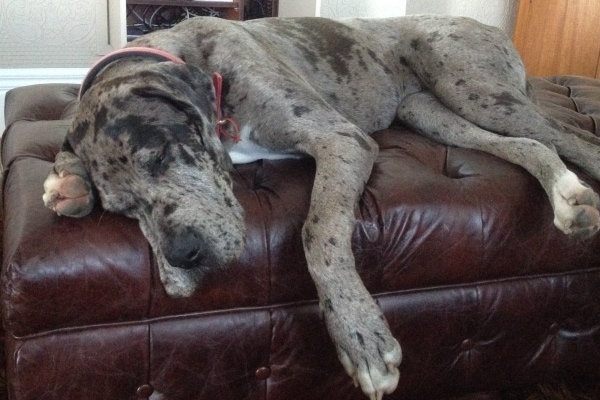
Please note that if your dog had a gastropexy because he or she was diagnosed with GDV, your veterinarian will likely have a longer set of instructions about post-operative care. Bloat can increase the recovery time, and gastropexies after GDV are at an increased risk for developing complications.
Whether an emergency or prophylactic gastropexy, another important part of your dog’s recovery is adjusting your feeding routines. Even though gastropexies can help prevent bloat, good eating habits can reduce the risk even further.
Ideally, you would spread out your dog’s daily food intake over two to three meals a day. Each meal should be eaten slowly. If your dog is a vigorous eater, feed him or her using a puzzle or slow feeder bowl.
4. What are the possible complications of the gastropexy?
Your vet will give you an idea of what to watch for, but in general most complications after gastropexy surgeries are mild and similar to problems that can occur after any surgery. These can include:
- Vomiting
- Diarrhea
- Decreased appetite
- Lethargic dog
- Decreased water intake
Two more significant complications include:
- Hemorrhage—Occasionally, a dog may begin to bleed excessively after surgery. Signs can include blood dripping from the incision, abdominal pain, or decreased energy.
- Incisional infection—If a dog licks or bites at the incision, it can become infected. You may notice the incision is red, swollen, or has discharge coming from it.
If you notice any of the symptoms on either list, please consult your veterinarian. Occasionally seemingly mild signs can be an indication of a more serious problem so it is best to seek your vet’s advice if you are worried.
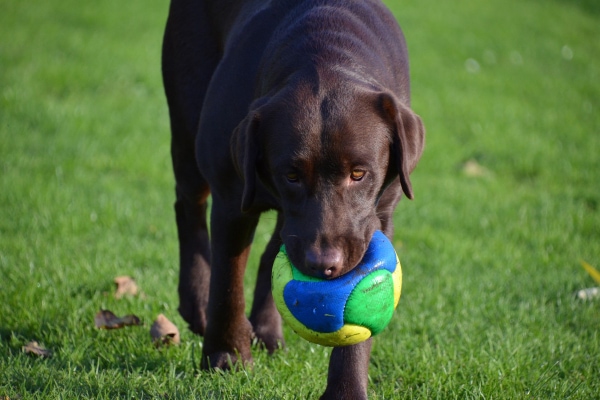
The good news is that with proper monitoring and follow up care, you can help greatly reduce the risk of complications. Many dogs do very well after prophylactic gastropexies and heal as quickly as they do following a spay or neuter.
Talk with your veterinarian
If after reading this article, you believe that your dog might be a good candidate for a prophylactic gastropexy, please schedule an appointment with your vet. He or she will help you assess your dog’s risk of developing GDV in the future and determine if/when to perform a gastropexy.
Did you decide to have a prophylactic gastropexy on your dog?
Please share your experience and what factored into your decision.
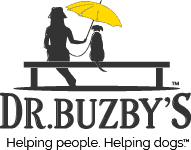

Hi
My 6-yerar-old poodle just had a gastropexy performed as he eats quickly even with a slow feeder bowl. He has not had bloat so this was done as a preventive measure. His surgery was 8 days ago. Today, my poodle got out and ran down the street. His sutures are intact as he has worn a body suit. How do I know that his surgery outcome has not been jeopardized by his run down the street? His sutures will be removed in 3 days.. how long after suture removal do I have to limit his activities? Thank you.
Hi Melissa,
Your boy is lucky to have you taking such good care of him. I am glad he is feeling well and trying to get back to his previous activities. In general, if the sutures on the outside have healed then the sutures on the inside should have healed as well. I am less worried about sutures coming lose from an elective procedure that involved healthy tissue than I would be if I was doing surgery on infected or damaged tissues. Monitor your boy for any signs of pain, redness, swelling, or drainage at the incision site. If all is normal, then you should be just fine. I suspect all is well. Wishing you all the best and keep up the good work!
Hello Dr Julie! Miss you here in Pa. We just had the gastropexy done on our 1 year old shepherd. She has a sensitive stomach and we are waiting for labs to come back. Her incision looks great but she is having a vomiting issue. She was on cerenia for 5 days then off for 3 and did ok but now vomiting is back. I am awaiting word back from vet although I am being told this surgery takes time to heal. Our girl is on sensitive diet and venison and Pepcid while we await lab results to see if anything else is going on. Would love your opinion or suggestions.
Hi Pamela,
I am sorry your girl is struggling with nausea since her surgery was performed. I think it is good you had some lab work done and hope the results offer good news. Honestly, if the vomiting only happened after discontinuing the cerenia, I would talk to your vet and see if you could try another round of the medication. I am not aware of any reasons why it would be a problem, but your vet would know best since they are familiar with your dog’s specific medical details. Hoping your sweet girl just needs more time for her body to heal and recover. Praying for a quick resolution and wishing you both the best!
My GS had emergency surgery for bloat, they gave her a 50 50 chance! She pulled through and is doing great! We are now 4 weeks post op! My question is the vets gave her Purina Pro Plan Vet Diet Gastoenteric, this is so expensive!! Can I put her back on her normal diet with probiotics? Or do I need to keep her on this Vet diet? Her surgery cost me 7 grand! I love her so much! She’s going to be 10 years old in November! Please advice what you think, thank you
Hi Donna,
I am so glad your pup’s surgery was successful and she has made a full recovery! If I had to guess, I think the vet only intended your dog to be on a special diet until the GI tract had fully healed. I am not sure when they would want you to transition back to a normal diet. I encourage you to give them a call and get their expert recommendation. Wishing you and your sweet girl many happy years ahead!
Hi Dr Buzby
I have a 1 year old Cane Corso. I had never heard of Bloat or anything like that before but when I started to read and hear more about it I decided I needed my baby to be protected. I scheduled her for her Spay and Gastropexy at the same time. as recommended, unfortunately due to some equipment malfunction they were unable to do the Gastropexy and want to reschedule 2 weeks after she has been spayed. My concern is with the 2 surgeries being so close together and her recovery in between. Do you think it would be better to wait?
Hi Giovanna,
I am glad you are taking preventive measures to ensure your big girl is protected and remains healthy. While it may cause no issues to do these procedures so close together, I personally would just rather wait to have them done at the same time. If the surgeries are elective and there is no reason for rushing, I would rather have one anesthetic event and not have to worry about scar tissue or adhesions when opening the abdomen a second time. Ultimately, you have to go with your gut and do what you are most comfortable with. I am sure things would be fine either way. Hoping the procedure goes smoothly and your girl makes a full recovery with no issues!
Hi! We have a rescue male that we adopted 4 months ago. He was already neutered when he was picked up as a stray (has the tattoo). He was held for 3 weeks (no chip) before being adoptable to make sure he wasn’t claimed. While we thought he was a larger lab, we have since found out he is a GP 50%/Mastiff 20% and Anatolion Shepherd 20%. the other parts are all small %ages. He definitely has the deep chest. When we adopted (and still thought he was a larger lab) we noticed what could have been a smaller surgical scar on his abdomen. Now that I am aware of this condition and procedure, how would I find out if there is any chance he had this preventative surgery already. Can you tell by Xray? Anything else? Will a vet be able to tell by exam without an Xray? Of course we will call her, but want to know in advance what she may need to do to see if we are right. She found the possible incision interesting too but didn’t even bring this surgery option up. He was estimated to be about a year when we got him, so he is likely getting close to 1 1/2.
Hi Laura,
This is so interesting! I don’t think you would be able to tell if a gastropexy has been done just with an exam unless you could somehow feel the sutures that were used to close the incision site. I also don’t know if x-rays are sensitive enough to pick up on this detail. You might be able to get some answers with ultrasound, but even that is not a guarantee. Ultimately, we may never know for sure. But I am so glad you found this sweet boy and with you both the best for a long and happy future!
Hi Dr. Julie, we decided to have this preventative surgery on our male Standard Poodle when he was about eighteen months old. He will be two in a couple of weeks. I do not regret the surgery because I have owned a poodle who bloated, and I owned a boarding kennel for sixteen years so have experienced the horror of that medical condition more times than I care to remember. However, my boy was a good eater before the surgery. In the past several months he has become incredibly picky, and the two vets I have seen at my vet clinic say nothing is wrong. This is a champion show dog as well as my beloved pet and watching him drop weight is really worrying him. I have even recently tried a home cooked diet, and I have tried the dehydrated raw meat diets. Nothing tempts him more than a couple of days. He will literally lay down across the room from the food bowl as if he is afraid of it. Vet gave me the lecture about he will eat when he gets hungry enough. She says not nauseous because he did take a treat from her but all he did was bite it and let the pieces fall to the floor he didn’t eat it. Can gastroplexy cause lack of appetite? Should I have any test done to make sure everything is ok inside, how would I know if something to do with the surgery is hurting him?
Hi Melanie,
I understand your concern for your pup with this recent lack of appetite. I am not familiar with this being a complication of gastropexy surgery. Without examining your dog, myself, it is hard to make specific conclusions. Just because his physical exam is normal doesn’t mean there isn’t something going on. Has he had any lab work done recently? I always worry about issues that can be tricky to diagnose such as Addison’s disease. It may be time to talk to your vet and see if they can do some more investigation. I am sure if you ask for additional testing, they would be glad to pursue. Also, if needed, you can request a consultation with an internal medicine specialist. All this may be nothing to worry about, but I like to be thorough and err on the side of caution. I hope you can find the answers you need to ensure your sweet boy is healthy and has a long life ahead. Wishing you the best of luck!
Hi Dr. Buzby!
Huge fan of yours here 🙂
Thank you for posting this about gastropexies! My 2 year old GSD just received one with her spay and a lot of people have asked me about the surgery- this article is great to refer them to!
We are 7 days post-op and are going to start introducing kibble to her food today (we’ve been doing just wet food because she’s a picky diva).
I was wondering if you think that dogs’ digestive systems may feel a little strange following the surgery? I was trying to imagine if I had it done, how awkward it may feel during and after eating.
Thank you for all of your hard work in not only senior dogs (how I originally found you), but for all dogs!
Hi Kalin,
Thank you for the kind words! I think it was such a great choice to have a gastropexy done while your girl was being spayed. I am happy to hear she is recovery well and starting back on her kibble food. I am not sure her GI tract will feel strange from the new positioning of her stomach, but she definitely may be a bit tender or sensitive from the surgical site. It was great to hear from you! Take care and best wishes. ♥
Reed is a 63# 20-month old dark blue standard poodle and he is beginning the harness training portion of becoming a working guide dog for a blind handler. He had his gastropexy one week ago and is healing really well — better and faster than his neuter! His handler and me (puppy raiser) did lots of research and our guide school highly recommended this preventive procedure, especially because he is a service dog. His handler’s current dog also had a gastropexy during its guide dog school puppy days.
Hint: **Using the post-surgical body suits post-operative over cones leads to a much more humane and easy recovery without the trauma of the dreaded cone.
Hint: **Find a good surgeon who performs LOTS of gastropexies. Get multiple quotes and save up. The surgeon we chose loves and owns Danes and performs this surgery every week. She and her office have been absolutely amazing.
Hint: **Using special easily digested wet food + boiled chicken for the first week — while transitioning back to their regular food — is an easy re-entry to their diet. Also, I started with six small meals every three hours and am now slowly moving back toward three meals three times/day over the first four weeks of recovery. Both of these practices are allowing his internal and external sutures time to heal without adding unneeded strain and digestive distress.
good luck to anyone on this journey, it’s providing us a lot of peace of mind!
Hi Sandy,
This is such good advice! Thank you for sharing your experience with us. Wishing Reed all the best as he works toward finishing his training. Bless you for being a part of such a wonderful cause!
My dog is a 11month old mini bernedoodle. she is currently 37 lbs. The vet feels she is about full grown but her embark estimated her to be 44lbs. She is about to have her spay and I am torn on adding the prophylactic gastropexy at this time. any advice?
Hi Lauren,
I understand your concern and why you are conflicted on whether to proceed with the gastropexy. Of course, I cannot make guarantees or give specific recommendations without examining your pup myself. With that in mind, I will say I have never recommended a gastropexy on a dog that was not a large/giant breed. All of my clients to whom I have recommended this procedure have had dogs that were well over 50 pounds. Now if your dog tends to eat very fast or eats large amounts then maybe it is more of a concern. Ultimately, I would defer to your vet’s advice and see what they think is best.
Hello Dr Busby. Our five year old German Shepherd suffered a severs case of bloat a couple of weeks ago. We rushed him to a vetinary hospital and after two days of intense treatment, he luckily recovered and came home to us. Two weeks later and he is back to his old self ,even though his exercise and play routine has been severely restricted.. His eating habits have also been changed to four small meals a day instead of one or two large meals ,one in the morning and the other at night. Our vet has advised us to have Storm admitted for a gastroplexy operation and he has been booked in for the procedure in two days time. We didn’t even have to think about having him done. We were horrified at the pain and suffering he went through and didn’t have a second thought about booking him in for this possible life saving procedure.. I will write back after we pick him up in a few days and let you know how he is going. Thank you for your wonderfully insightful article on this terrible condition .I hope neither our beautiful boy Storm ,myself or my wife ,ever have to go through this again. It was genuinely scary and heart breaking to see Storm in such a state of pain and distress.. It is only now, that we have begun to understand how lucky we were that he survived at all. Rob, Queensland Australia
Hi Rob,
I can only imagine how scared and worried you must have been for Storm! I am so glad you were able to get him medical attention quickly and the surgery was a success. Thank you for sharing your experience with our readers. How did the gastropexy go? I am hoping all is well and your sweet boy is making a full recovery. Feel free to leave an update if you have a chance!
my 7 year old, very health, male gsd developed this . I’m sure over time- but it suddenly became apparent. (note- I had no clue about this concern, I will also blame myself for not being aware of this condition) . with in a matter of 5 mins from taking family photos for Christmas my son, (still talking about the gsd) Apollo was spinning, moaning, bloating was saw, foaming due to shock, I quickly had him in the car 5 mins after, at the vet in 1 hour. we live in the stixs. they un twisted his stomach, attached it to his right side. He survived, I got him to eat food once back home a day later due to his attachment to me the only trick was to eat HIS food together, say what you want 5k out of pocket and two mouth fulls of his food in my stomach later he is alive with the family. This condition is real, when it happens suddenly its scary. Mintues count. I promise. we are 24 hours after the start of this nightmare and I’m still worried about recovery. 3 more days to go to make sure everything inside is good. If not he will at least be with his family, my only question, his meds and due to putting him under, his estimated time to poop is 2 to 3 days after, yes I’m worried….if he does soon I’ll have everything I want for Christmas (go figure j/k) any advice would be greatly appreciated. God Bless.
Hi Dustin,
I am sorry your dog experienced a GDV (Gastric Dilatation Volvulus) and had to receive emergency care. I am glad to hear that the surgery was successful and your Shepherd was able to return home. How are things today? Has your pup made a full recovery? Feel free to leave an update if you have a chance. Hoping all is well and you have many happy days ahead!
well 2 weeks in, Apollo incision looks alittle red near his man hood, the cone gives him alot of stress so I must monitor him 24/7, obviously I slipped up & it only took 10 mins to 2nd the importance of the cone.
more importantly-
He finished his anti sick pills, 1 of 6 different meds given following his surgery. note he has done number 2 about once ever two days. only 1 of which has been soild. he is alert in demeanor but puke up a good amount of yellow- which is vile, followed by the same with his bland diet of chicken and rice. which he ate after the 30 mins after the first sickness. (my wife was present, not me). the 2nd sickness was proably due to eating right after getting sick. waiting on vet to call back. we are also due for staples removal in two days (after 14 days of surgery).
Hi Dustin,
Thank you for the update! I am so glad Apollo was able to make it through the critical recovery period after his surgery! I understand your concern with the vomiting he has experienced, but overall, it sounds like things are going well. Hoping you receive good news from his follow up visit. Staple removal should be a breeze. Wishing you both the best and praying your sweet boy will be back to his normal self very soon.
Thank you for the excellent and informative articles about bloat and gastropexy surgery. Both our dogs had the elective laparoscopic procedure with their spay/neuter. Do I need to confirm the surgery was successful? Is there even a method for doing that?
Hi Catherine,
There should be no need to confirm the success of the surgery. While complications are possible, I have never seen a case where a gastropexy did not hold and the stomach was able to return to the normal position in the abdomen post-op. I think you made a great choice for your two pups. Best wishes!